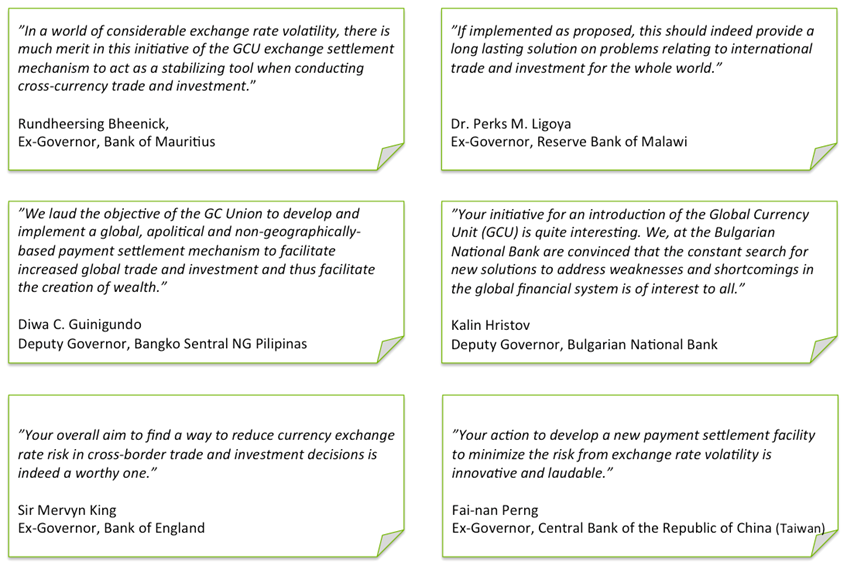Background
From its foundation in 2008, the GSU has positioned itself as an innovative entity focusing on research into exchange rate dynamics and the development of mitigative solutions. Its work has been based upon the logical premise that it is possible to improve existing exchange rate systems through further development, as with any other kind of systems, and that such development requires undisputable empirical and academic documentation.
| We cannot solve the problems with the same thinking we used when creating the problems. - Einstein |
Over the years, the GSU has engaged in consultative dialogues with central bank authorities and other market participants, through which a deep understanding of the problem has been achieved. From this process, focus was adjusted from mainly communication to a more technical user-oriented approach. By use of the newest technology, we are now engaging in practical implementation of the solutions developed.
Endorsements
 |
Objectives
The objective of the Union is to promote the development and implementation of solutions which contribute to improved exchange rate stability; to perform research and present empirical and academic documentation for such solutions; to broaden knowledge of such solutions; to engage in and promote dialogue concerning exchange rate stability; and to found a network of relevant stakeholders within this field.
